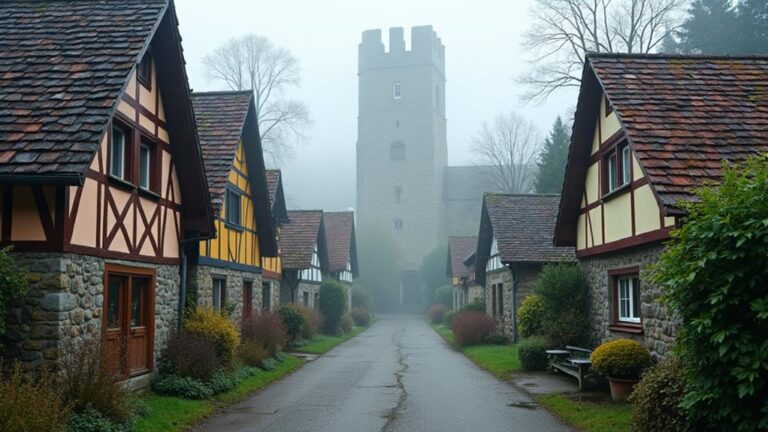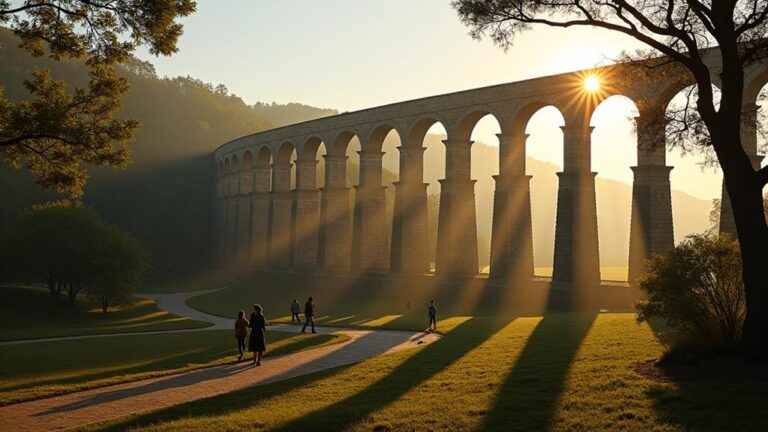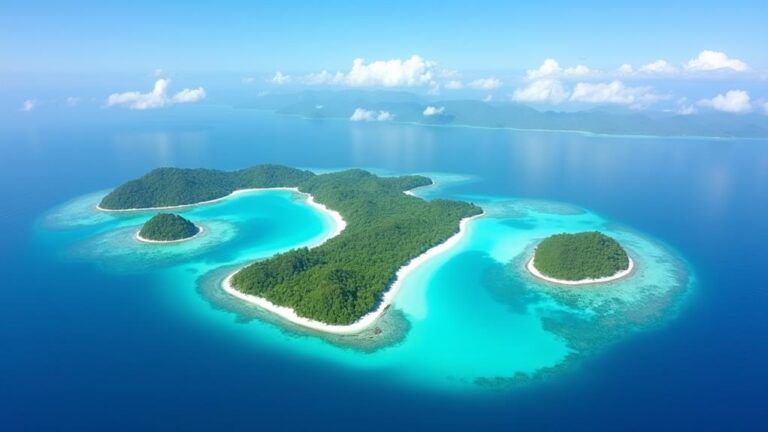Just as the walls of Troy were once impenetrable, some prisons around the world have earned notoriety for their supposed escape-proof reputation. You've likely heard of Alcatraz, the infamous US prison that held the likes of Al Capone, but how does it compare to other notorious prisons globally? From the European Bastille to the Asian "Bangkok Hilton," each of these prisons has a unique and often dark history that continues to captivate the imagination. As you explore these infamous institutions, you'll begin to uncover the complex web of corruption, human rights abuses, and historical significance that surrounds them – but what secrets lie behind their stone walls?
Contents
- 1 Key Takeaways
- 2 Alcatraz Federal Penitentiary
- 3 Notorious Prisons in Europe
- 4 Infamous Prisons in Asia
- 5 South American Prison Systems
- 6 Australian Penal Colonies
- 7 Frequently Asked Questions
- 7.1 What Is the Most Secure Prison in the World Currently?
- 7.2 Are Prison Tours Available for All Famous Prisons Globally?
- 7.3 What Are the Most Common Prisoner Rights Abuses Worldwide?
- 7.4 Can Former Prisoners Become Prison Security Personnel?
- 7.5 How Do Prisons Address Mental Health of Inmates Globally?
- 8 Conclusion
Key Takeaways
- Alcatraz Federal Penitentiary in the US is infamous for housing notorious inmates like Al Capone and its seemingly escape-proof cells.
- The Bastille in France and Pawiak Prison in Poland are notorious for their roles in suppressing resistance and mistreating prisoners during times of war.
- Klong Prem Central Prison in Thailand and Changi Prison in Singapore are infamous for their harsh conditions and human rights abuses in Asia.
- South America's complex prison systems struggle with overcrowding, corruption, and poor conditions, as seen in Brazil's Carandiru Penitentiary and Argentina's prisons.
- Australia's history of penal colonies involved transporting over 160,000 convicts to work on infrastructure projects between 1788 and 1868.
Alcatraz Federal Penitentiary
Alcatraz Federal Penitentiary, located on a small island in San Francisco Bay, was a maximum-security prison that operated from 1934 to 1963.
As you analyze the history of this notorious institution, you'll find that it housed some of the most infamous Alcatraz inmates, including Al Capone and George "Machine Gun" Kelly.
The prison's maximum-security status wasn't just a label; its cells were designed to be escape-proof, with steel-reinforced walls and floors.
Despite these precautions, Alcatraz inmates made several attempts to escape.
You'll find that there were a total of 14 Alcatraz escapes during its operational years, with two of the most notable occurring in 1943 and 1962.
The 1962 escape, in which three inmates disappeared and were never found, remains one of the most infamous in Alcatraz history.
While some inmates did manage to escape, the harsh conditions and isolation of the island made it a difficult task.
You'll also find that the prison's remote location and the strong currents in the surrounding waters made it nearly impossible for inmates to survive outside the prison walls.
Notorious Prisons in Europe
As you shift your focus from the United States to the European continent, you'll discover a multitude of prisons notorious for their dark histories, harsh conditions, and infamous inmates.
One such prison is the European Bastille, located in Paris, France. The Bastille prison was infamous for its mistreatment of prisoners and became a symbol of the French Revolution.
Although it was demolished in 1789, its legacy lives on as a representation of oppression and resistance.
In Eastern Europe, you'll find the Pawiak Prison in Warsaw, Poland, which was notorious for its role in suppressing the Polish resistance during World War II.
This prison was also known for its haunted dungeons, where many prisoners were tortured and executed.
The Pawiak Prison is a grim reminder of the atrocities committed during times of war.
These prisons serve as a monument to the complex and often dark history of the European continent.
By examining these institutions, you gain a deeper understanding of the social, political, and economic factors that shaped the course of European history.
Understanding the past is vital in shaping a more just and equitable future.
Infamous Prisons in Asia
Your exploration of notorious prisons now takes you to the Asian continent, where institutions have been shaped by the region's complex history, cultural diversity, and often turbulent politics.
In this context, some prisons have gained notoriety due to harsh conditions, overcrowding, or high-profile inmates. The "Bangkok Hilton," a nickname for Klong Prem Central Prison in Thailand, is a prime example.
Built in the 1940s, this maximum-security facility has been criticized for its poor living conditions and alleged human rights abuses.
Another notable example is Singapore's Changi Prison, infamous for its strict regime and high execution rates.
Established by the British in 1936, Changi has undergone significant transformations over the years, including a major renovation in the 2000s aimed at improving living conditions and rehabilitation programs.
Despite these efforts, the prison remains known for its tough stance on crime, reflecting Singapore's zero-tolerance approach to law and order.
Both Klong Prem and Changi Prisons serve as benchmarks to the complexities of the Asian prison system, where historical, cultural, and social factors intersect to shape the experience of incarceration.
South American Prison Systems
South America's complex history of colonization, military dictatorships, and socio-economic disparities has profoundly influenced its prison systems.
As you examine the region's prisons, you'll notice a stark contrast between the haves and have-nots. Brazil, for instance, has struggled to address its overcrowding issues, with many facilities operating at more than twice their capacity.
This has led to the rise of powerful gangs within the prison walls, such as those found in the notorious Carandiru Penitentiary in São Paulo. The Rio slums have also been linked to high crime rates, with many prisoners being from these areas.
In Argentina, the prison system has been criticized for its poor conditions and corruption.
Buenos Aires gangs have been known to exert significant control over the prisons, often through bribery and intimidation. This has created a culture of fear and violence within the facilities.
You'll also notice significant variations in prison conditions across South America, with some countries like Chile and Uruguay boasting more modern and humane facilities.
However, the overall trend is one of concern, with many prisons struggling to provide adequate care and rehabilitation for their inmates.
Australian Penal Colonies
Australia's history of establishing penal colonies, a practice that spanned nearly a century, is a fascinating example of how nations have utilized imprisonment as a means of expanding their territories and punishing their citizens.
As you explore this period, you'll find that the British Transportation system played a significant role in the colonization of Australia.
Between 1788 and 1868, the British government transported over 160,000 convicts to Australia, with many being sent to penal colonies in New South Wales and Van Diemen's Land (now Tasmania).
Convict labor was a vital component of these penal colonies, as prisoners were forced to work on infrastructure projects, such as roads and buildings.
This labor not only helped establish and maintain the colonies but also contributed to the British government's goal of expanding its territories.
By utilizing convict labor, the British government was able to reduce the financial burden of colonization while also punishing its citizens for various crimes.
The legacy of these penal colonies continues to be felt in Australia today, with many sites serving as a reminder of the country's complex and often tumultuous history.
Frequently Asked Questions
What Is the Most Secure Prison in the World Currently?
You're likely wondering what the most secure prison in the world currently is. Analyzing maximum security facilities, it's clear that the ADX Florence in the US stands out as nearly escape-proof, boasting multiple layers of security.
Are Prison Tours Available for All Famous Prisons Globally?
You'd expect all historic sites to be open for tours, but surprisingly, not all prison tours are available globally. Some prisons, now tourist attractions or prison memorials, offer guided tours, while others remain off-limits due to security or sensitivity concerns.
What Are the Most Common Prisoner Rights Abuses Worldwide?
When examining prisoner rights abuses globally, you'll find human rights violations often stem from solitary confinement, overcrowding issues, forced labor, and medical neglect, which are prevalent in many correctional facilities worldwide.
Can Former Prisoners Become Prison Security Personnel?
You walk into a correctional facility, and a familiar face greets you – a former inmate now working as a corrections officer. This second chance employment showcases rehabilitation success, offering a new path for those who've served time.
How Do Prisons Address Mental Health of Inmates Globally?
As you examine the mental health of inmates globally, you'll find many prisons addressing the issue by reducing mental health stigma and implementing rehabilitation programs, such as counseling and therapy, to promote inmates' overall well-being.
Conclusion
As you've explored famous prisons around the world, it's clear that many are marred by human rights abuses and inhumane conditions. A staggering 30 million people worldwide are currently incarcerated, with many facing inhumane treatment and overcrowding. This sobering statistic underscores the need for prison reform and raises questions about the role of punishment versus rehabilitation in modern societies, highlighting the complexities of the global prison system.









